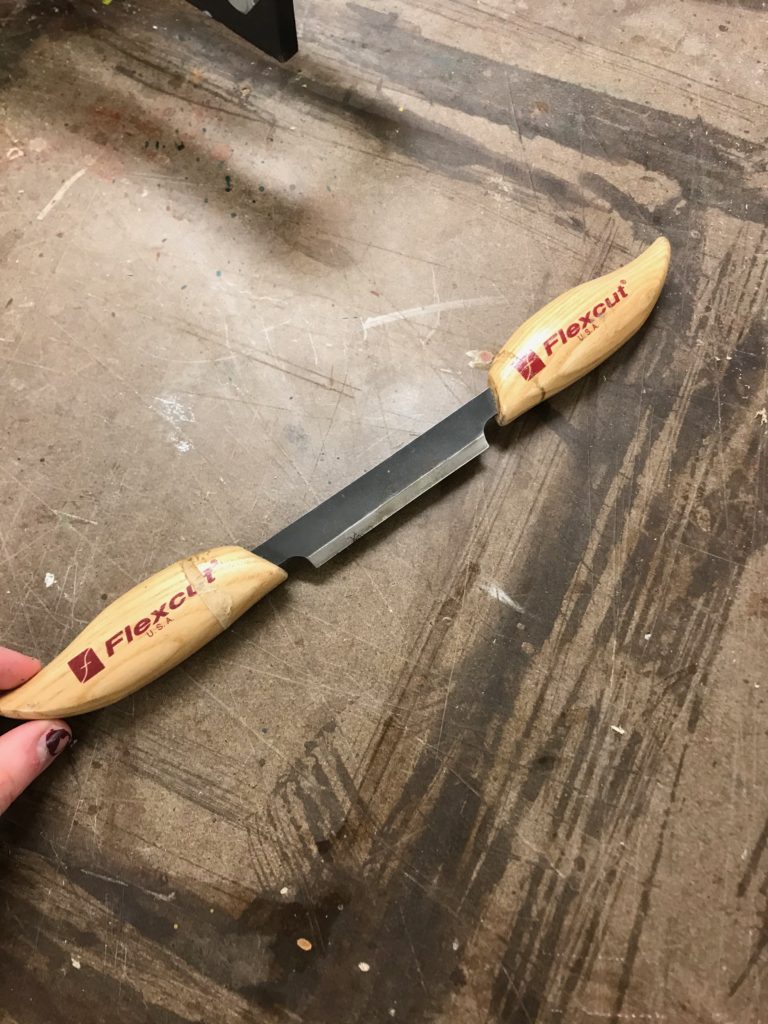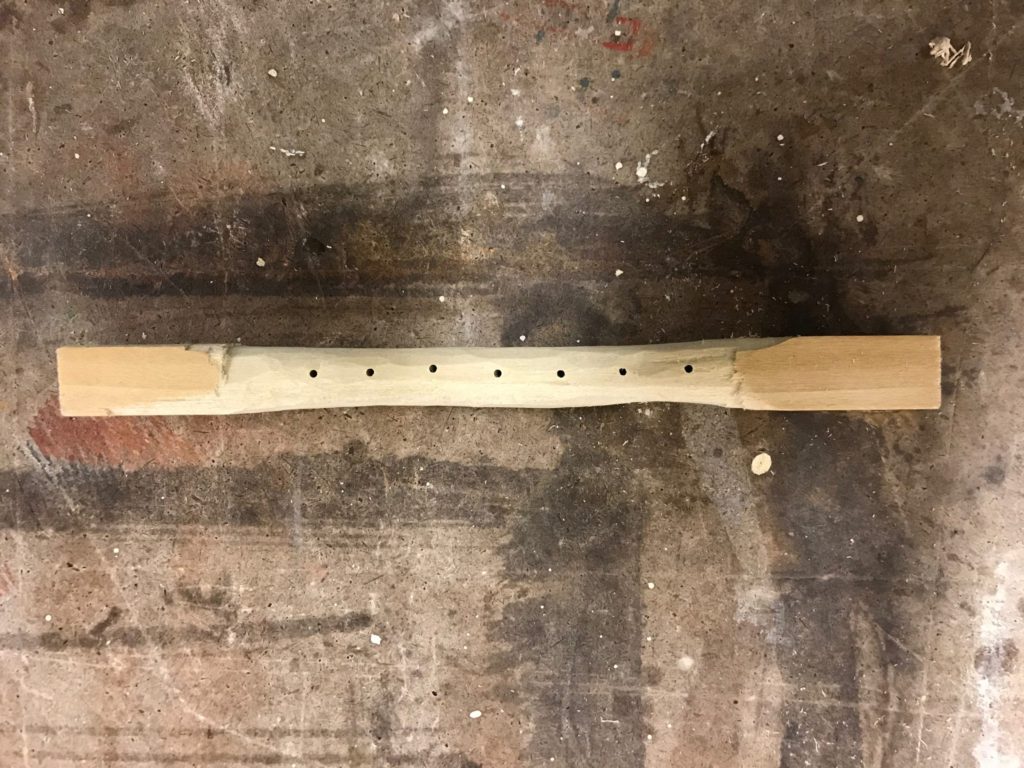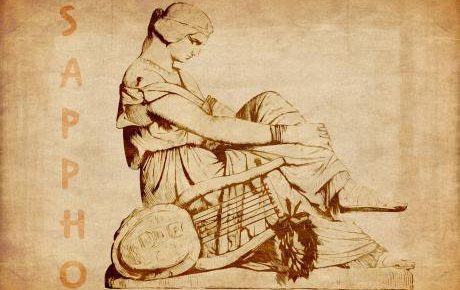
Here’s the draw knife I used to carve my string holder 
My final lyre’s string holder
After my goat skin was attached and dried, I attached the string holder (that’s what I’m calling the piece of wood I’m attaching them to the drum with). I used a square poplar dowel, and planned on attaching it with epoxy. I shaved off the center of the dowel with a draw knife for several reasons. 1) to give the strings a circular object to tie around and 2) in case I needed to restring, I have enough space between the string holder and drum skin to do that while it is attached. I used a square dowel so I could leave the ends unfiled and by providing a rectangular surface for the epoxy for more surface area. I then drilled 7 evenly spaced holes in the dowel, and attached it to the drum with the quick setting epoxy I used before. Next, I attached the bridge. In retrospect, I wish I had grouped the strings together more closely, I drilled the holes about 1 centimeter apart from each other, and while this is fine based on vase evidence the strings of a barbitos were grouped more closely together where they attached to the lyre.
I next began to attach the strings. I mistakenly thought the thickest strings should go on the ends of the instrument, and ‘balancing’ out the rest of the tones from the middle, with the thinnest (and thus the highest note string) in the middle. I returned to my reference works, and consulted Stefan Hagel’s Ancient Greek Music, A New Technical History1 Page 122.
While I was doing this, I also realized I had another (hopefully the last) issue with my barbitos. I had been using Helen Robert’s 1981 reconstruction of a lyre, but the barbitos does not look entirely like a lyre. The result is my barbitos looks more like a really large lyre than a barbitos, it is missing the ‘classic crossbar emblematic of a Barbitos’2 Martha Maas and Jane McIntosh Snyder Stringed Instruments of Ancient Greece, (West Hanover: Yale University Press 1989) 126; Their book is an excellent resource for more on ancient Greek stringed instruments. I am obviously disappointed with this, and in future barbitoi going forward I will make sure to work in this distinctive feature. This is an important lesson in making sure to carefully review your source materials before beginning construction, not after, and it’s one I’ve now (hopefully) mastered, after several missteps. I did consult with Cassidy Frye if there was any way I could move the crossbar ‘up’ to give it a more barbitos-esque appearance, but she advised against it, which I ultimately think is wise. This lyre does work functionally, and will serve as a fine final lyre, though I do wish it looked more like a ‘classic’ barbitos.

Diagram of my Barbitos shape which looks more like a lyre 
A more typical barbitos shape, with its iconic arms and crossbar (that my barbitos lacks)

Regardless, I love my final lyre, and I’m excited for when I can play it!
I will now have to re-string my lyre in any case, going from thickest string on the left to thinnest on the right, but it will give me an opportunity to retie the strings on the crossbar. In ancient Greece, it is believed strings were tied to crossbars with a raw ox hide, called a kollops 3 Helen Roberts, “Re-constructing the Greek Tortoise Shell Lyre,” World Archeology, (Vol.12, No.3, 1981): 306 Like I did with my second prototype, I replicated this with t-shirt fabric as I believe enough animals have been used in the making of this project (also I assumed raw ox hide would be less than fun to work with). When doing it the first time, I wrapped the string around the crossbar, then wrapped the fabric around the string and held it in place with a peg. After doing further research, I realize this deadens the sound of the string somewhat, and my new technique after restringing will be to wrap the cloth which I have mildly shredded for better traction around the crossbar and then to wrap the string around it, with the peg. I am tempted to use glue to give more traction, as the kollops had raw ox fat on it to give it more traction, but given that these strings are very expensive and I’ve already made multiple design missteps with this project I am just going to stick with dry fabric for now. I am excited for when my lyre can finally sing!

